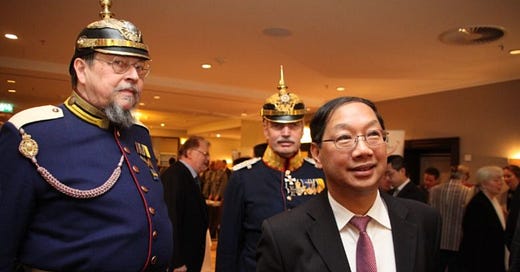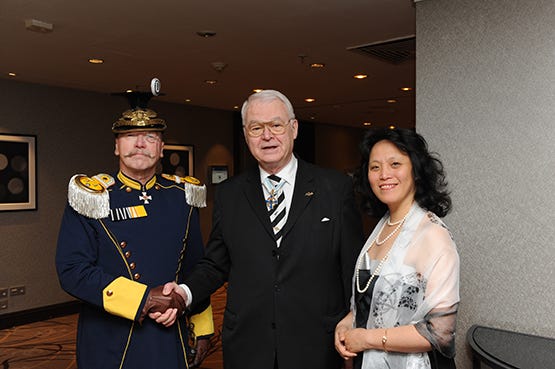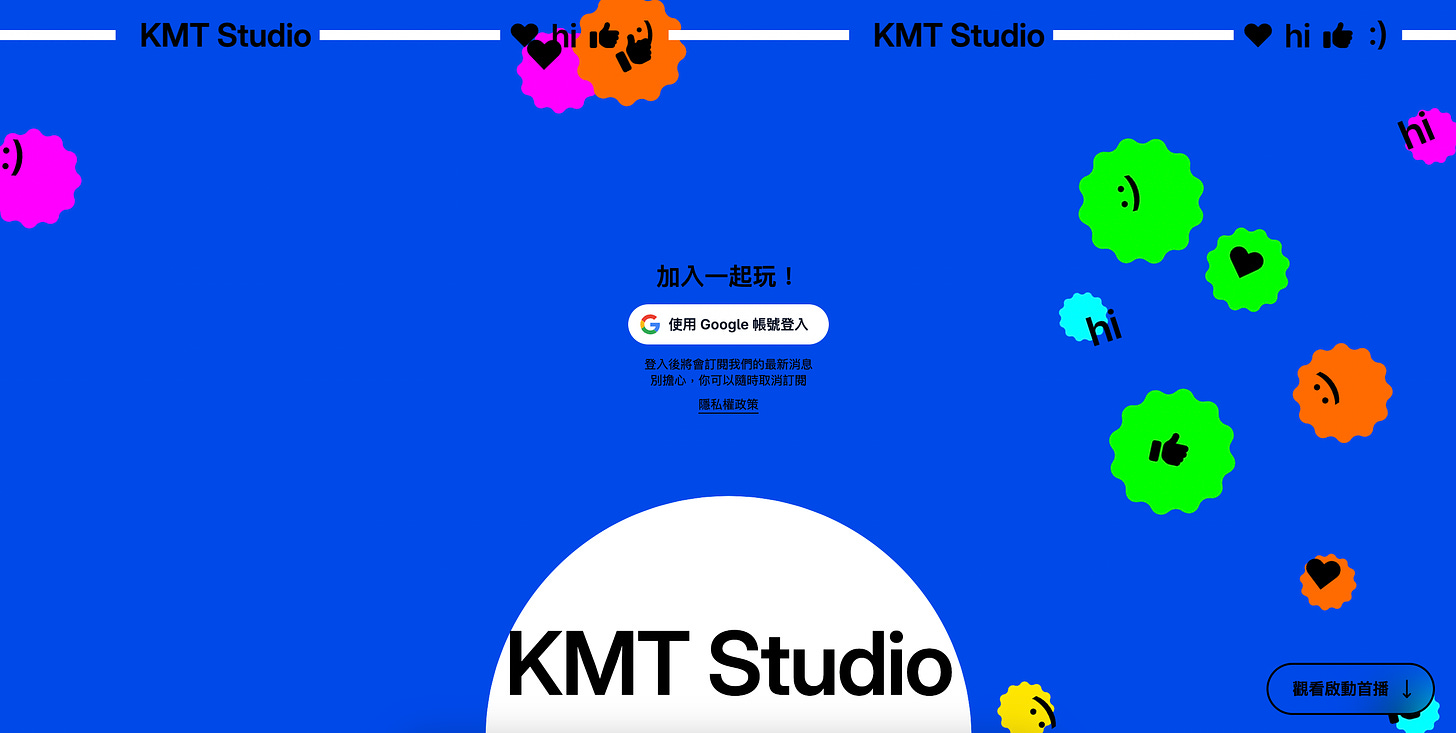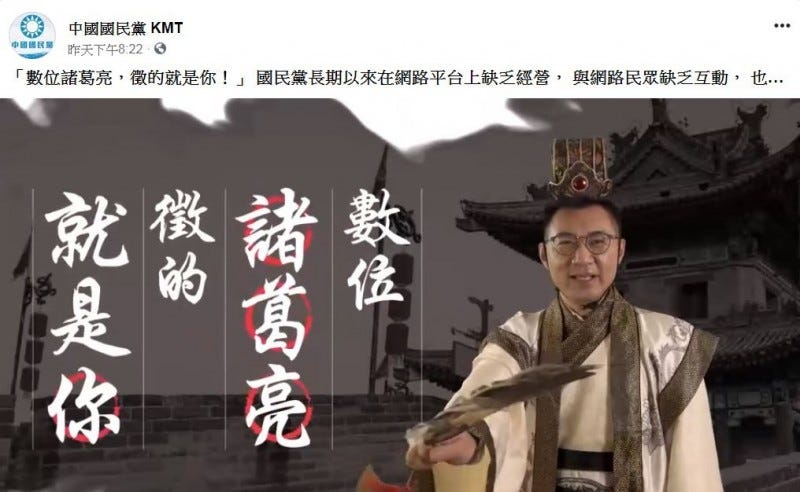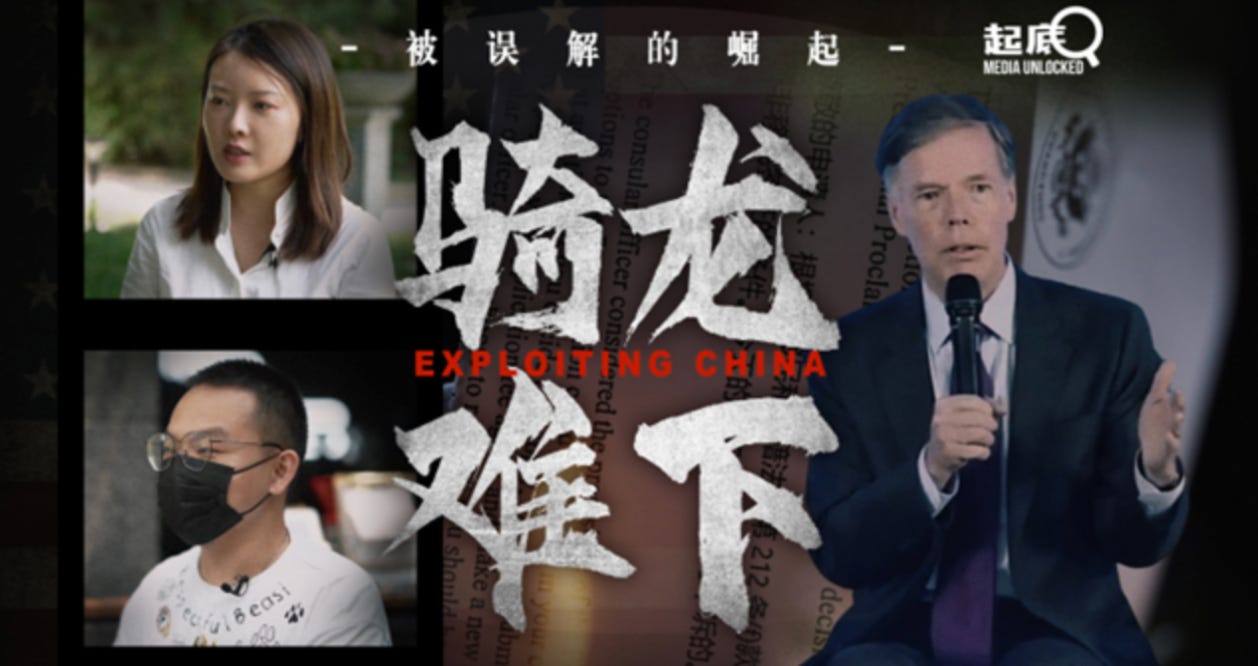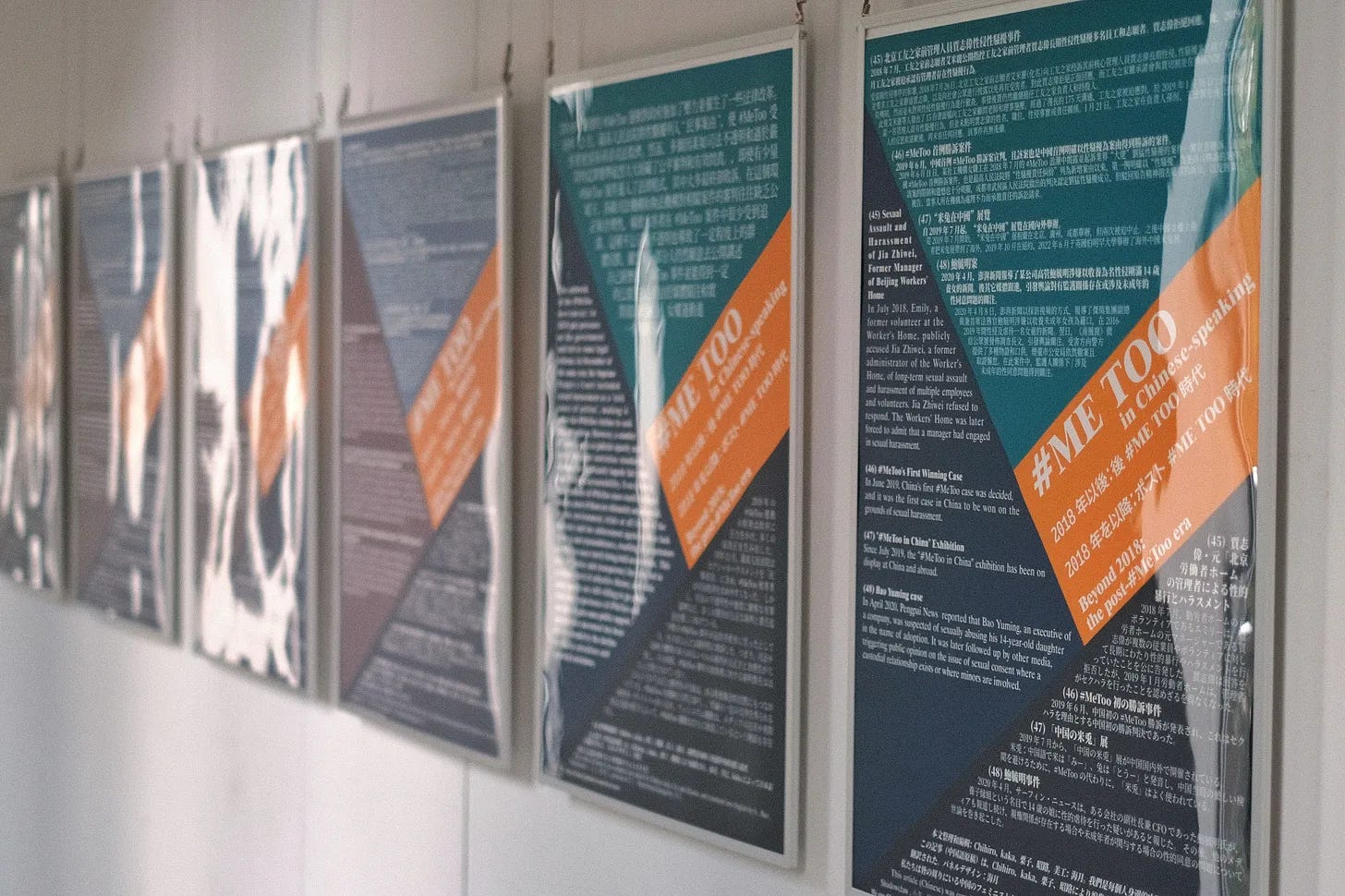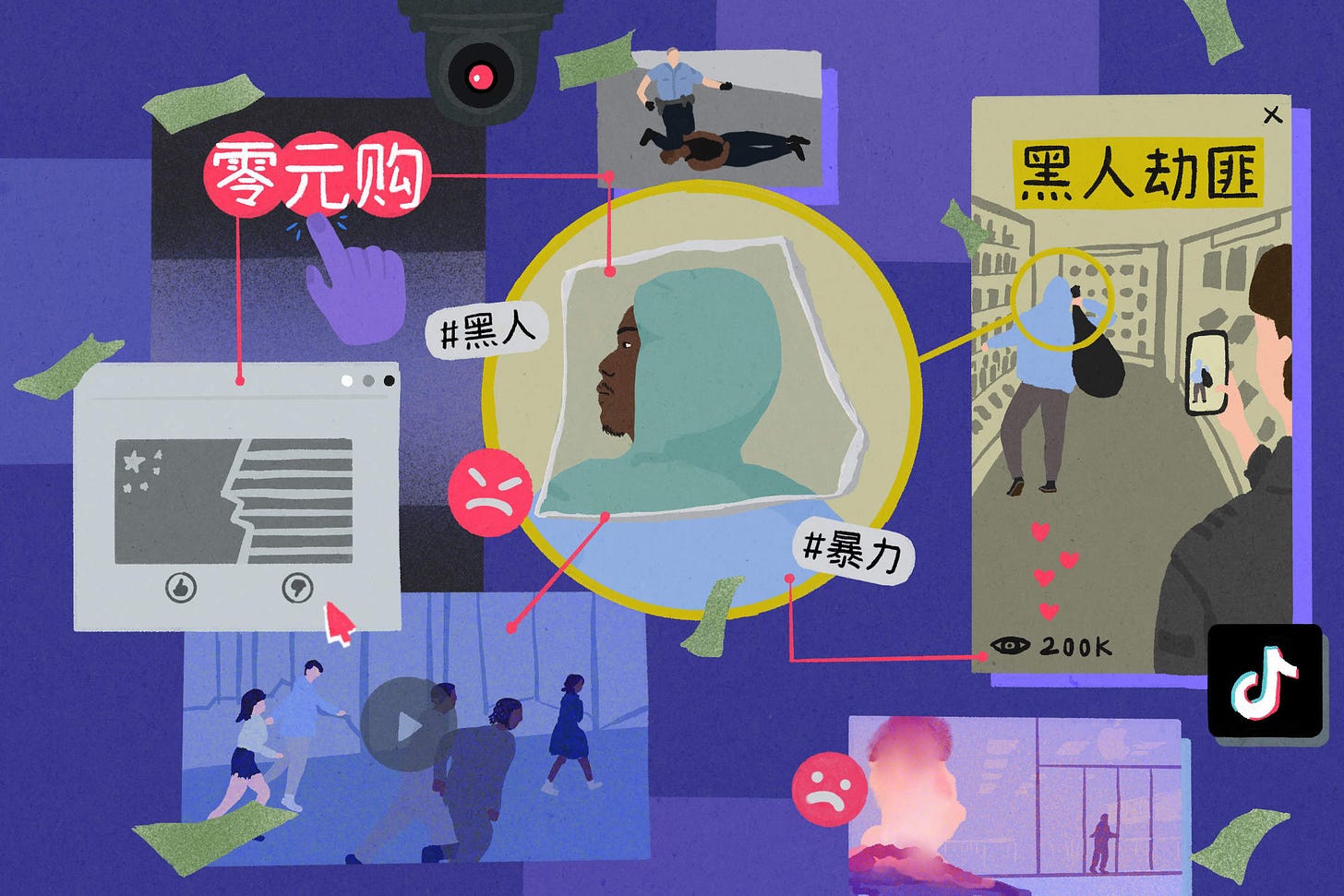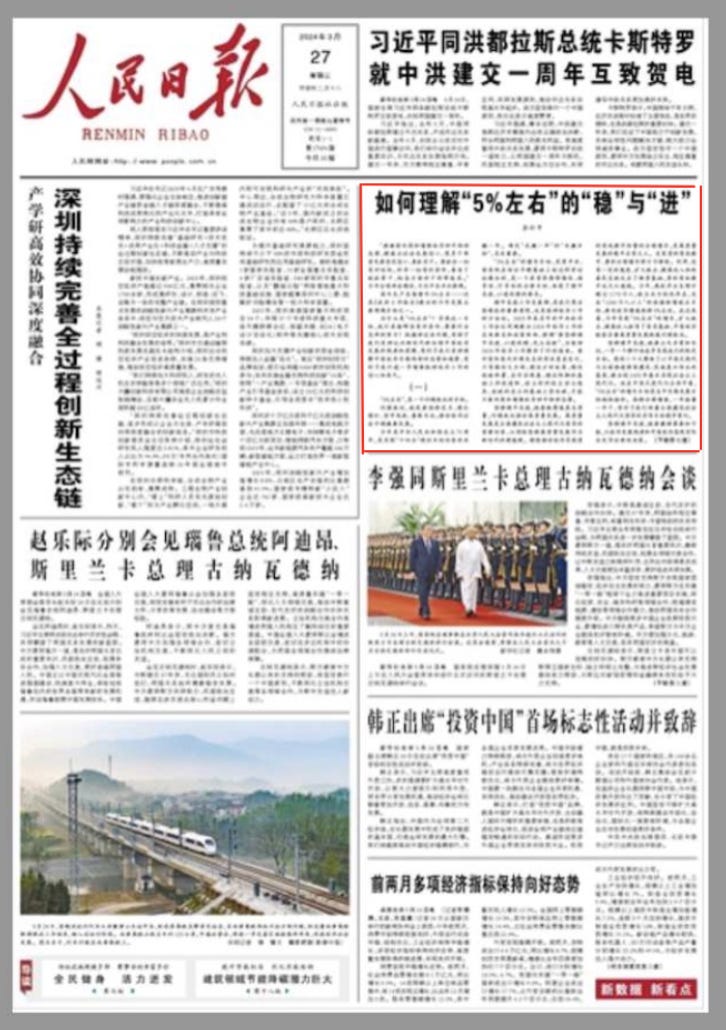Lingua Sinica Newsletter, 3 Apr
News, analysis, and commentary on Chinese-language media from the PRC and beyond.
Welcome back to Lingua Sinica.
This year the Qingming Festival (清明節) holiday weekend is off to a very bumpy start in Taiwan, where we were rattled by a magnitude-7.2 earthquake this morning. It was by far the most powerful and longest-lasting earthquake since the China Media Project moved to Taiwan — the biggest in two and a half decades, in fact — and strong aftershocks are continuing to hit us as this newsletter goes out.
Luckily, the worst the CMP team suffered was a shelf-full of books knocked to the floor. But nearer the epicenter in eastern Hualien County (花蓮縣), buildings are teetering and roads have been buried under rubble. At the time of writing, there have been seven deaths recorded and several hundred injuries nationwide. But for the biggest tremor since the Jiji Earthquake of 1999 (921大地震) — which killed thousands and leveled swathes of the country — there’s still reason to be thankful for the relatively low cost in lives and infrastructure this time around, and optimistic that Taiwan will continue to build back better.
Taiwanese people’s sang-froid in the face of natural disaster was perhaps best epitomized by an anchor for local station SET News (三立新聞), who in this now-viral clip managed to stay on her feet and keep the news rolling as the entire studio shook around her. May we all share the same — quite literally — unshakable devotion to duty.
When we return from the holiday next week, look out for a new series from Lingua Sinica on the business of publishing and selling books in the Chinese language. In cooperation with exile outfit Photon Media, we’ll be looking at independent publishers struggling to survive in the midst of a worsening political environment in Hong Kong, followed by an interview with writer Chan Chi-Tak (陳智德), and much more. Stay tuned and stay safe.
Ryan Ho Kilpatrick
CMP Managing Editor
NEWSPEAK
Hong Kong Goes into Battle
Since its national security crackdown began four years ago, Hong Kong has been speaking a new language. Local officials now decry “soft resistance” against the state and exclusively refer to the pro-democracy protests that drew millions of mostly peaceful marchers to the streets as the “black riots” (黑爆) and an attempted “color revolution” (顏色革命) orchestrated by foreign “black hands” (黑手).
More recently, the campaign to push homegrown security legislation known as Article 23 has created a whole new vocab set. When the law sailed through in a record-breaking 11 days, concerns that the city’s now opposition-less legislature hadn’t adequately scrutinized the bill were hand-waved — what we were witnessing, they said, was merely the kind of “high quality, high efficiency” (高質高效) legislation possible in a “patriots-only” chamber. In fact, the law was passed “not too quickly but too slowly” (不是太快而是太慢), according to the Hong Kong Commercial Daily and others, since the previous attempt in 2003 had been derailed — when such things were possible — by massive public opposition.
Perhaps the most curious new addition to this dialect of officialese, however, has been “going into battle lightly equipped” (輕裝上陣). The four-character set phrase has been a favorite of Chief Executive John Lee Ka-chiu (李家超) when delivering promises about how the law will revitalize Hong Kong’s economy, which has been in the doldrums since the first national security law imposed by Beijing in 2020.
Digging Up
As far as metaphors go, it’s not the most intuitive. But the logic is something like this: Hong Kong has, hitherto, been weighed down by threats to its national security. This need to constantly be on guard against hostile foreign forces has distracted authorities from developing the economy and solving long-festering livelihood issues like unaffordable housing and an overtaxed healthcare system. When Article 23 was “debated” in the Legislative Council (an opportunity for “patriots-only” legislators to grandstand and theatrically perform loyalty to Beijing), every speaker repeated the promise that it would save the economy. The more national security laws they pass, in other words, the less they will have to think about national security.
“Logic” may we over-selling this line of thinking. Didn’t Hong Kong’s economy thrive for generations while it was supposedly beset by insidious foreign threats, and didn’t it begin its present freefall precisely when the national security crackdown began? How is digging further supposed to get them out of this hole?
“Going into battle lightly equipped” is that rare breed of political slogan that not only defies reality but flips it entirely on its head. As “Asia’s World City” decides to go to war against the outside world by making cooperation with “international organizations” a possible security infraction, it is doing so more tightly encumbered and heavily weighed down than ever before.
SOURCE CODE
China’s Prussian Pals
A riddle not for the faint of heart: How do you connect China’s official People’s Daily newspaper with German grassroots efforts to stave off the decline of traditional Prussian values?
The answer, as it turns out, is Volker Tschapke.
Few if any of our readers will have an inkling of the German businessman, who is currently a board member for a company that claims to forge “deep ties of cooperation and friendship” between China and the rest of the world. But he is instrumental as a readymade source on Sino-German affairs in the PRC’s state media. Last week, Tschapke was quoted in a front-page report in the People’s Daily in which he represented, according to the paper, the “many people” in Germany who “strongly advocate and actively promote Sino-German friendship.” Tschapke marveled at China’s “youth and vitality,” rubbished Western media for not having “enough understanding” on China, and said he believed China would play an “important role” in boosting Germany’s economy.
The businessman’s ties to China go way back, and his tracks can be found everywhere in party-state media — if nowhere else. In a 2014 piece Tschapke wrote for the Chinese embassy in Germany, he said he first traveled to China in 1984 and has visited every year since 2009.
One man in a roll-call of foreign talking heads praising what the Chinese Communist Party does at home and abroad — or sometimes a German voice in stories highlighting Sino-German connections — Tschapke has already been interviewed multiple times this year, and has been a state media regular for at least three years running.
But what about those traditional Prussian values?
From Prussia to Russia, with Love
Tschapke is always quoted by state media in his role as President of the Prussian Association of Berlin-Brandenburg. This is an amateur club which according to Tschapke is dedicated to the “spiritual renewal of the fatherland” and “actively works against a general decline in [traditional Prussian] values.” It is staunchly Eurosceptic and advocates against refugee immigration to Germany. Their 2014 and 2015 New Year’s Eve parties earned a visit from China’s then-Ambassador to Germany Shi Mingde (史明德).
But Tschapke’s friendship isn’t exclusive. He has a dubious track record of saying nice things about authoritarian nations when no-one else will. “I was impressed by the standards of the voting here, they were very high,” he said of the 2023 elections he witnessed in parts of Ukraine forcibly occupied by Russia. “When I return, I will try to talk about what I saw, and I hope that this will help improve relations between our countries. I thank everyone for the honest, impartial organization of the voting.”
QUOTE/UNQUOTE
Blue & Grey
In Taiwan, political parties typically fall somewhere along the Green-Blue spectrum, depending where they stand on issues of national identity and cross-strait relations. But go to a rally for the biggest of the pan-Blue parties, the Kuomintang or KMT (國民黨), and it’s liable to look more grey than anything else. Over 70 percent of KMT members are in their 60s or older and, after an unprecedented third defeat in January’s presidential elections, the party long synonymous with gerontocracy is facing up to the fact that unless it wins over young voters, it could soon become a relic of history.
To this end, the party introduced a new YouTube channel and website last week called KMT Studio. Like a podcast started earlier this year, the new initiative was sold as a way for the KMT to reconnect with young Taiwanese. The landing page, a medley of cutesy graphics and emojis, is an interesting new look for the party of revolutionary leader Sun Yat-sen and military dictator Chiang Kai-shek. But it’s also a testament to how seriously, if belatedly, they’re taking the challenge, particularly as young voters flock to the newly formed Taiwan People’s Party (民眾黨).
For more on KMT Studio and the party’s other media outreach aimed at young voters, we spoke with Brian Hioe (丘琦欣), founding editor of New Bloom online magazine and a non-resident fellow of the University of Nottingham's Taiwan Studies Programme.
Lingua Sinica: What is the thinking behind the launch of KMT Studio and other new media products — does the party see this as a way to recapture the youth vote?
Brian Hioe: The KMT is looking to take a page from design-savvy Internet memes in past years, such as the Taiwan Design Expo’s personality test. Tech influencer Alex Hormozi is also credited as an inspiration in the initial YouTube video, and there’s also been the rise of US-style late shows along the lines of The Night Night Show with Brian Tseng (博恩夜夜秀). This is likely yet another attempt to appeal to young people by taking advantage of YouTube and recognizing how streaming and short-form videos have been very successful in this regard. You can also see attempts to use technology to appeal to young people with the use of AI translation in the KMT Studio.
LS: Is this another attempt by the KMT to modify their campaign strategy in anticipation of future elections?
BH: This is an open question. The KMT periodically engages in these attempts to try and appeal to young people, but they often peter out. The next round of elections are some time away, but the KMT likely hopes to build up a social media-driven youth following along the lines of Ko Wen-je’s “Little Grass” (小草) or the many fans of political streamer and bodybuilder Holger Chen (館長). This would be why effort is placed this time on branding the channel itself as having a distinctive identity of its own. Ironically, this takes place in a similar timeframe to the DPP launching its own streaming platform, one which draws on the young politicians in the DPP to try and give life to the incoming Lai administration when Lai himself seems to struggle at the sort of social media antics that appeal to young people.
At the same time, a lot of the content of the KMT Studio program indicates anxiety about the KMT’s lack of popularity among young people, with continual emphasis on that this is an initiative of young people inside the KMT. But there is also much emphasis on the traditional values of the KMT that may undermine appeals to young people, for example the constant reference to the “revolutionary values” of the historic KMT and the fact the party has more than a hundred years of history.
LS: This is far from the first time the KMT's tried to appeal to a younger demographic. What are some of the most eye-catching ones you've seen and why does it seem like they never succeed?
BH: This new initiative comes on the heels of a number of unsuccessful attempts to appeal to young people, including Chiang Kai-shek NFTs, dance videos, and Johnny Chiang’s initiative to launch a “digital chapter” of the KMT that he did while dressed in Zhuge Liang (諸葛亮) cosplay. Part of it returns to that the KMT is, in fact, just that much out of step with young people because of its geriatric leadership.
The leadership of the DPP and even the TPP aren’t in fact any younger, but what does exist in those parties is space for young people’s voices to be heard in a manner that results in effective advertising that can appeal to other youth. There is sufficient capacity for feedback between the older leadership and younger, more social media-savvy party workers. Unlike the DPP, the KMT has also tended to double down on fronting its older politicians to appeal to young voters, while the DPP generally promotes its younger generation this way. Ultimately, the KMT’s efforts tend to be half-hearted in appealing to young people and the lack of compelling ideas that come from young people themselves is probably what leads to such appeals failing. And when such ideas do come from or are fronted by young people, there is still a degree of party traditionalism mixed in and this is bound to alienate most youth.
CHAIN REACTIONS
Cracking Open Media Unlocked
The Myth of the China Threat (被误解的崛起), a documentary series from state-run China Daily (中国日报), aired its third episode earlier this year. The program aims to debunk the “China threat theory” (中国威胁论) — part of its wider mission to expose Western media’s supposed “smear campaign” against China. The producer is Media Unlocked Studios (起底工作室), an outfit whose Chinese name invokes the word qidi (起底), meaning to investigate and publicize someone’s background — literally, to “get to the bottom.”
So let’s get to the bottom of just who they are.
Knocked Off TikTok
In China Daily’s 2022 Media Responsibility Report (中国日报社会责任报告), Media Unlocked is presented as an example of how the newspaper is fulfilling President Xi’s invocation to wage “public opinion struggle” (舆论斗争). On YouTube, videos bearing the #MediaUnlocked hashtag are connected to China Daily’s account. Their TikTok handle, which had more than 345,000 followers, was removed late last month — apparently as part of an effort at TikTok to remove state-linked propaganda accounts. Media Unlocked is regularly cited in state media, including in this article for the State Council’s Taiwan Affairs Office, which cites it as “China Daily’s Media Unlocked.”
Their content is united by a common theme: attacking Western journalists and media outlets. Their video hitting out at BBC journalist John Sudworth’s investigation into Xinjiang was nominated for an award by the All-China Journalist Association.
Interviewees follow a familiar pattern, too. In one video Beijing-based professor John Ross calls the idea of Chinese debt-traps “nonsense.” What viewers are not told, however, is that Ross is a long-standing China Daily columnist, the leader of a far-left fringe group in the United Kingdom that has defended Russia’s invasion of Ukraine, and a faithful attack dog for PRC state media taking aim at its critics abroad.
FLASHPOINTS
Good Riddance, RFA?
The US-funded news outlet Radio Free Asia (RFA) said in a statement late last week that it had closed its bureau in Hong Kong amid concerns over the safety of its staff. The announcement came one week after the territory’s passage of a tough new national security law known as Article 23 — which enforces stringent rules on sedition, state secrets, and treason, and stipulates that national security trials can be held behind closed doors.
In the statement on the restructuring of its Hong Kong-related coverage, RFA’s President and CEO, Bay Fang, noted that the outlet would now, in its Cantonese and Mandarin reporting, “shift to using a different journalistic model reserved for closed media environments.”
Citation Needed
In China and Hong Kong, official CCP-run media responded to the news of RFA’s departure with growls and gritted teeth. The territory’s Ta Kung Pao (大公報), a paper backed by the Liaison Office of the Central Government in Hong Kong, ran an article on Sunday that mentioned nothing about the closure of the RFA bureau, but offered a list of the US outlet’s alleged falsehoods running back nearly 15 years. To substantiate its claim that RFA “spread rumors on behalf of the Tibetan government-in-exile” amid riots in Tibet in 2008, the Ta Kung Pao cited not facts, but rather referenced a harshly worded May 26, 2008, commentary in the Global Times that was run at the time in its parent newspaper, the CCP’s People’s Daily.
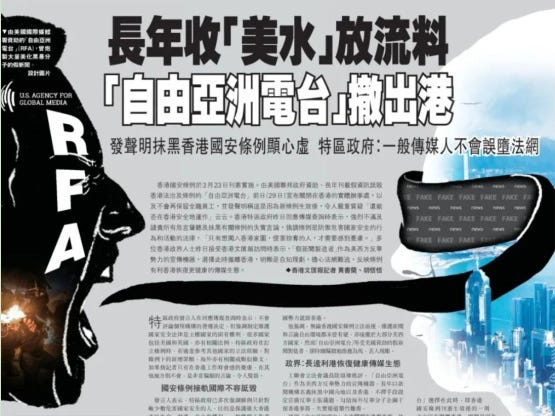
“Jun Zhengping Studio” (钧正平工作室), a social media account operated by the News Broadcasting Center of the People’s Liberation Army (PLA) — “Jun Zhengping” being a homophonic pen name for “military + political + commentary” (军政评) — ridiculed RFA for having a “fiercely political nature” despite having “always billed itself as an ‘independent media organization.’” The piece quickly veered into an attack on the US for its alleged hypocrisy on freedom of expression, citing as counterexamples such instances as the 2020 designation of five Chinese state media outlets as foreign government functionaries, and more recent moves by the US Congress to force TikTok’s Chinese parent company, ByteDance, to divest the popular video app.
On its English-language website, the state-run Global Times suggested that Hong Kong had celebrated RFA’s departure, reporting a handful of unattributed remarks from “netizens.” “With the closure of its physical office in Hong Kong, observers said this ‘fake news creator’ is finally ending its 28-year-long rumor-mongering era in Hong Kong, which is absolutely beneficial to the city,” the report concluded, citing unattributed sources.
SPOTLIGHT
MeToo: China, Hong Kong, and Taiwan Too
It is now more than six years since “MeToo,” a survivor-led global social movement against sexual violence, went viral in China. In its latest post, Mang Mang (莽莽), an independent Chinese-language magazine based in Europe and born in the wake of the 2022 White Paper Movement (白紙運動), explores the history of the movement and its impact on China through a report on a poster exhibition held over three weeks from last November at the University of Tokyo.
Called “MeToo China Milestones” (MeToo中国大事记), the Tokyo exhibition was organized by Hai Yue (海月), an activist who says she was inspired by her conversation with Zhou Xiaoxuan, popularly known in China as Xianzi (弦子), a screenwriter and former television intern who became an inspirational voice in China’s MeToo movement after bringing a sexual harassment case against the television host and actor Zhu Jun (朱軍). Hai Yue says she was driven by the fact that “MeToo in China has received significantly less attention" globally than the MeToo movement in the West. The upsurge of the MeToo movement in Taiwan in 2023 offered further inspiration.
“With the idea of breaking down barriers between the three places and on both sides of the Taiwan Strait, she invited not only many artists from China but also exhibitors from Hong Kong and Taiwan. The exhibition was opened with the expectation of transcending language and nationality,” Mang Mang explains.
Visit Mang Mang on Substack to learn more. And be sure to subscribe.
ANTI-SOCIAL LIST
Who is Seeing the Real America?
The following is an excerpt from a thought-provoking piece by Initium Media (端媒體) on the implications of disinformation for Chinese impressions of America. Look out for a full translation on Lingua Sinica after the Qingming Festival.
The first time I saw a “zero-dollar shopping” (零元購) video, I was taking the Beijing Subway late at night.
“Zero-Dollar Shopping, America’s Common Prosperity Policy” — it was certainly an eye-catching headline.
“Bang!” A gunshot rings out and the camera focuses in on a storefront. A gang of masked Black people charge in. They ransack the goods on the shelves, stuffing their bags full. Some cradle TVs half their height; others run out onto the street with their arms wrapped around huge bundles of clothes. In one video, they don’t even leave the potted plants by the till. Customers stand by in disbelief while security guards shake their heads helplessly.
Two years ago, just when I decided to go study in the United States, these short-form videos on the miserable state of public security in the country began appearing on my feed non-stop. Up until I arrived in New York, “zero-dollar shopping” still hadn’t faded from the Chinese internet.
Similar videos also turn up regularly on the phones of my family members in China and they send them to me on WeChat. When I chat on the phone with my family on the way home from class, my grandmother urges me to get home as quickly as possible. In her imagination nowhere is safe in New York after nightfall. When I talk to relatives on my way to work in the mornings, they warn me to be careful of Black people on the street, who, they say, are “uneducated and savage.”
They’ve never been to America, yet have a rigid impression of what this place is like. I began to wonder: which one of us was seeing the real America?
STORYTELLERS
Who’s Filling the Gaza Info Gap?
Shortly after Israel launched Operation Swords of Iron against Hamas in Gaza, a group of strangers met in a Taipei park. They represented a wide diversity of backgrounds: from Taiwanese activists and organizers to Israeli and Palestinian residents in Taiwan, from professional translators to high school and college students. But all were bound by shared concern over the growing number of casualties in the Gaza Strip and the relative silence from Taiwanese media.
The result was For Peace Taiwan (可以自由巴), a group of about 20 people sharing information about and advocating for Palestine. That includes translation work on social media, but also advocacy, protest organizing, outreach to local media, and the curation of Chinese-language resources on the history of Israel and Palestine.
The account’s organizers say their work is a necessary response to the significant gap in Taiwanese media coverage of the crisis in Gaza. It’s also part of the wide landscape of multilingual information on the Gaza crisis that has found a home on Instagram — including the work of many Palestinian journalists offering on-the-ground coverage as most foreign journalists have been denied access to the strip.
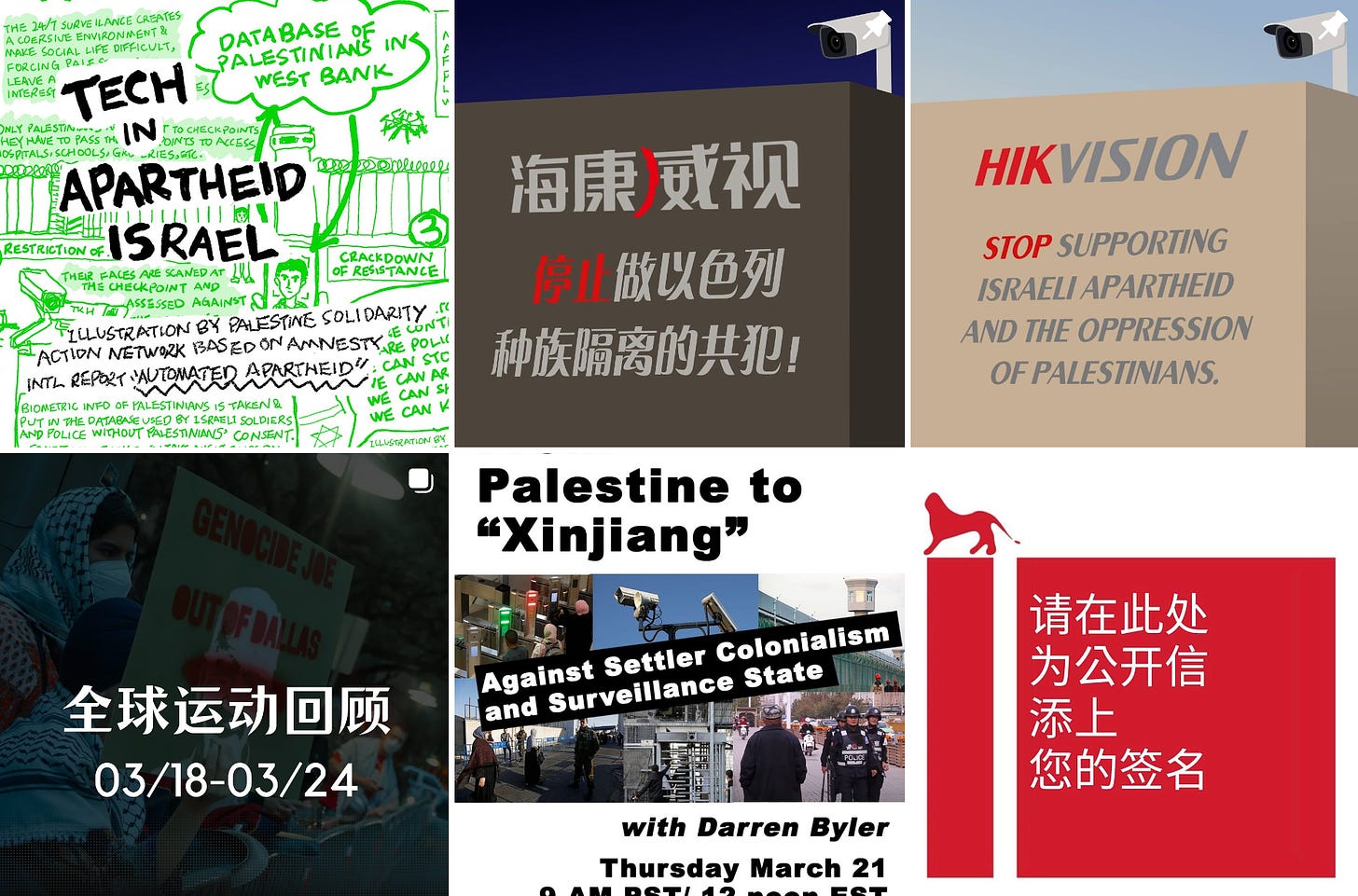
Interviewees running three Gaza-focused social media accounts say the lack of Palestinian perspectives, high levels of misinformation about the war, and missteps in Western coverage as motivations for their work. This matters especially in Taiwan, where domestic outlets draw produce stories that simply summarize Western media reports — re-topped with more sensational headlines and language to appeal to local audiences.
Learn more about these efforts to broaden Chinese-language coverage of the crisis and promote solidarity between Palestine, Xinjiang, and Taiwan by reading Jordyn Haime’s latest for Lingua Sinica: Filling the Gaza Info Gap.
CLOSE READINGS
Did You Spot That Pen Name?
Last week, a front-page commentary in the CCP’s official People’s Daily argued the case for China’s 5 percent target for GDP growth in 2024, unveiled last month at the annual “two sessions.” Written by an author identified as “Jin Sheping” (金社平), it made the case for why the target is a reasonable one — at once ambitious and achievable. “If we are pragmatic and bold, we will be able to consolidate and strengthen the economic upturn, and the target of 'around 5%’ can definitely be realized,” the article said.
Who was this enthusiastic author, given such prominence on the front page of the Party’s flagship newspaper? With no clear identification of Jin as a People’s Daily journalist (本报记者), and no bio offered at the foot of the article, we can guess right off that this is likely an official pen name.
In this case, “Jin Sheping” (金社平) is a homophone that translates “important commentary on economic and social issues" (经济社会重要评论), and it is a collective pen name that was birthed in 2016 by the Economic and Social Department of the People's Daily for the writing of commentaries on economic affairs that represent the view of the top leadership.
The “Jin Sheping” byline first appeared in the newspaper on November 14, 2016, with an extensive 9,000-word article called "Three Years of Comprehensive Deepening Reform" (全面深化改革三年了) featured on the front page. It provided a meticulous and commendatory account of three years of reform efforts under the leadership of Xi Jinping.
For more on official pen names and their role in PRC history, read our CMP analysis on the subject.


